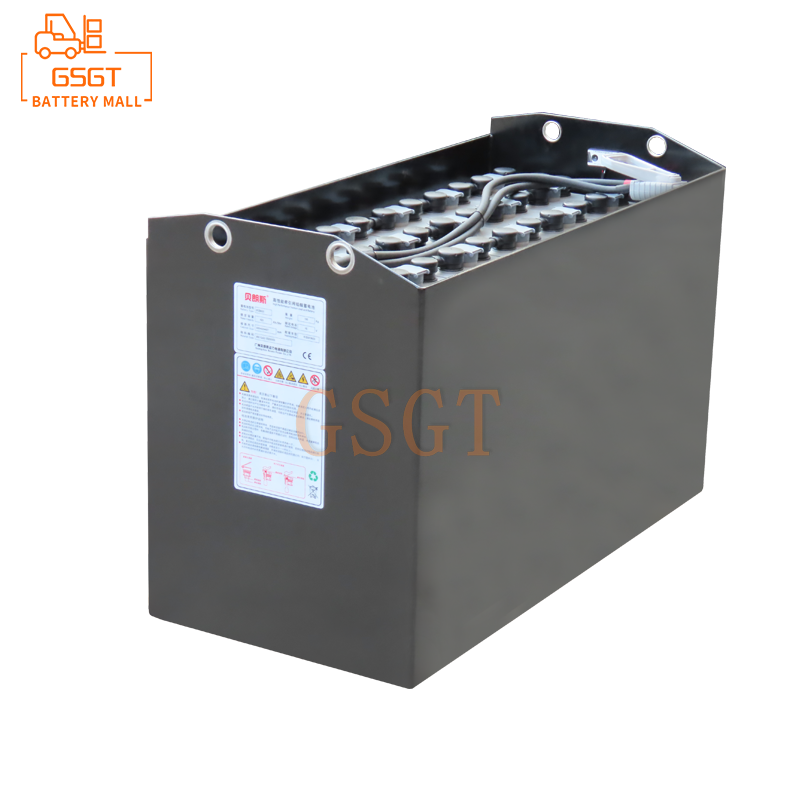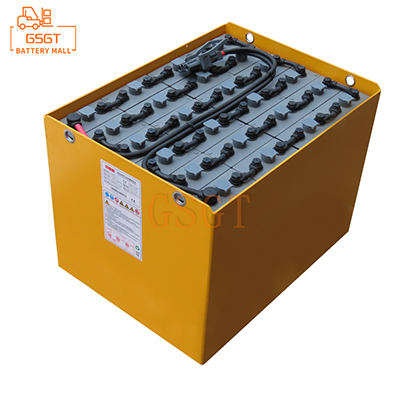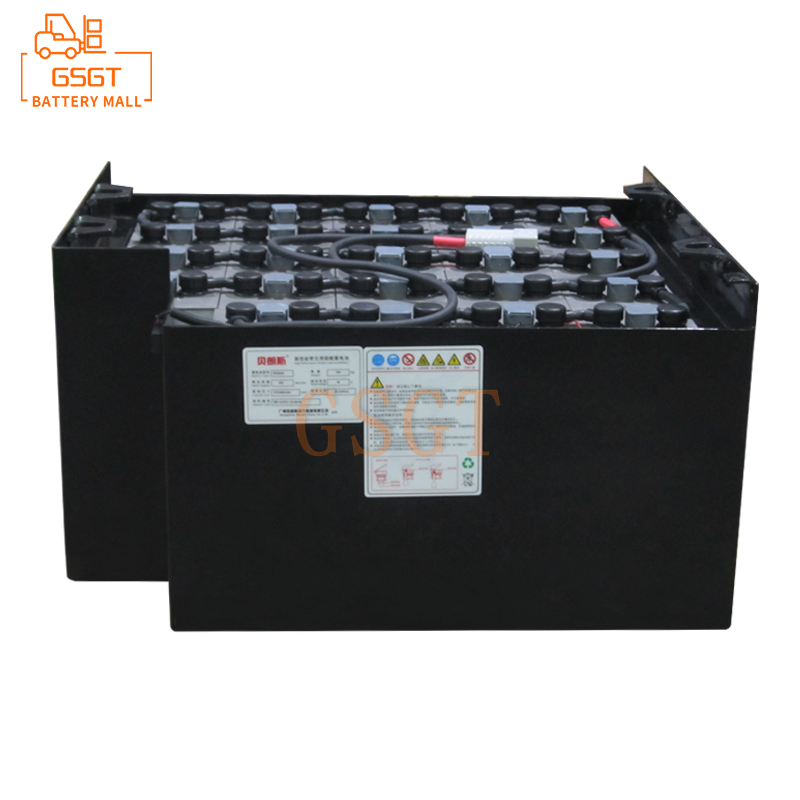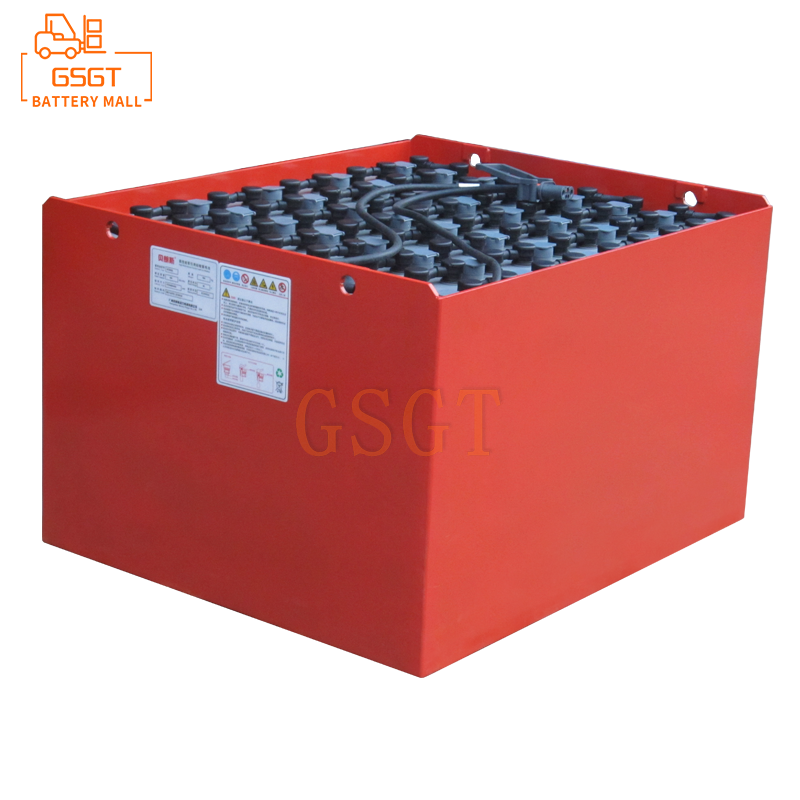Time:2025-05-12 10:22:15
Browse:668
Introduction
In modern logistics and industrial production, forklifts, as important material handling equipment, the performance of their power source - lead-acid batteries - is of vital importance. The capacity and endurance of lead-acid batteries not only directly affect the working efficiency of forklifts, but also relate to the operating costs of enterprises and the smoothness of production processes. A thorough understanding of the key factors that affect the capacity and endurance of lead-acid batteries in forklifts is of great significance for optimizing forklift usage and enhancing enterprise efficiency.
The capacity foundation of lead-acid batteries for forklifts
Capacity measurement
The capacity of lead-acid batteries in forklifts is usually expressed in ampere-hours (Ah) or kilowatt-hours (kWh). Ampere-hours reflect the amount of electricity a battery can continuously output under certain discharge conditions, while kilowatt-hours take into account both voltage and capacity, and can more intuitively demonstrate the amount of energy stored in the battery.
Internal factors affecting battery capacity
Plate materials and structures
The plates are the core components of lead-acid batteries, and their materials and structure play a decisive role in capacity. The content and quality of active substances in the plates are of vital importance. High-quality lead alloys, such as those with an appropriate amount of antimony, calcium and other elements added, can enhance the mechanical strength and electrical conductivity of the plates, while reducing self-discharge phenomena, thereby increasing the battery capacity. The thickness of the plates also affects the capacity. Thicker plates contain more active substances, which can increase the initial capacity of the battery to a certain extent, but they will also increase the weight and cost of the battery, and may affect the charging and discharging performance of the battery. In addition, the larger the surface area of the plates, the more active substances will be involved in the electrochemical reaction, and the greater the battery capacity will be. Therefore, the use of plates with special structures such as porosity and mesh can effectively increase the surface area and enhance the capacity and performance of the battery.
Electrolyte characteristics
The electrolyte plays a role in conducting ions in lead-acid batteries, and its characteristics have a significant impact on the battery capacity. The density of sulfuric acid electrolyte is a key factor. An appropriate density can ensure the smooth progress of electrochemical reactions. Generally speaking, an electrolyte density between 1.28 and 1.29g/cm³ is more appropriate. Excessively high density, although it can enhance the electromotive force and capacity of the battery, will accelerate the corrosion of the plates and shorten the battery's lifespan. If the density is too low, it will reduce the discharge performance and capacity of the battery. In addition, the purity of the electrolyte is also very important. The presence of impurities may trigger side reactions, consume active substances, and lead to a decrease in battery capacity.
Battery design and manufacturing process
The design structure of a battery, such as the arrangement of positive and negative plates, the material and thickness of the separator, etc., will affect the ion transport and heat dissipation performance inside the battery, and thereby influence the battery capacity. Reasonable design can reduce the internal resistance of the battery, improve the charging and discharging efficiency, and increase the battery capacity. Advanced manufacturing processes can ensure that the active substances on the plates are evenly distributed and structurally stable, as well as that the battery has good sealing performance, thereby guaranteeing the consistency and stability of battery capacity.
External factors affecting battery life
Forklift load and working mode
The load weight of a forklift is one of the important factors affecting the endurance of its lead-acid battery. The heavier the load, the more energy the forklift needs to consume during operation and lifting of goods, the faster the battery discharges, and the longer the endurance naturally decreases. According to the law of conservation of energy, forklifts need to overcome greater gravity to lift heavy objects, and at the same time, during operation, they also require greater traction force to overcome friction and inertia, all of which result in the battery outputting more electrical energy. Different working modes, such as frequent starts and stops, high-speed driving, and long-term continuous operation, have different impacts on battery life. Frequent starts and stops will cause the motor of the forklift to start and brake frequently, resulting in a large instantaneous current and increasing the energy consumption of the battery. When driving at high speed, the motor's rotational speed increases, power consumption rises, and the battery's discharge rate also accelerates. Long-term continuous operation will keep the battery in a discharged state, causing the battery temperature to rise, performance to decline, and further shortening the battery life.
Working environment conditions
The ambient temperature has a significant impact on the endurance of lead-acid batteries in forklifts. In a low-temperature environment, the viscosity of the electrolyte increases, the diffusion rate of ions slows down, the electrochemical reaction rate decreases, and the internal resistance of the battery increases, resulting in a reduction in the available capacity of the battery and a significant decline in its endurance. In high-temperature environments, although the electrochemical reaction rate increases, it will accelerate the corrosion of the plates and the evaporation of the electrolyte, shortening the battery life. At the same time, it may also lead to problems such as thermal runaway inside the battery, affecting the normal performance and endurance of the battery. In addition, factors such as humidity and altitude in the workplace can also have a certain impact on battery life. High humidity environments may cause corrosion of the battery casing and electrodes, increasing the internal resistance of the battery. In high-altitude areas, the air is thin and the heat dissipation conditions deteriorate. The heat generated by the battery during operation is difficult to dissipate, which can easily lead to excessively high battery temperature and affect the battery's endurance.
Charging management and maintenance
Reasonable charging management is crucial for improving the endurance of lead-acid batteries in forklifts. Overcharging and overdischarging can both cause damage to batteries, shorten their lifespan and reduce their endurance. Overcharging will cause a large amount of gas to be generated inside the battery, resulting in the drying up of the electrolyte and sulfation of the plates. Excessive discharge will irreversibly convert the active substances on the plates into lead sulfate, reducing the battery capacity. Therefore, the appropriate charger should be selected based on the battery type and usage conditions, and charging should be carried out strictly in accordance with the charging specifications to avoid overcharging and overdischarging. At the same time, regular maintenance and care of the battery should be carried out, including checking the electrolyte level, cleaning the battery surface, testing the battery voltage and internal resistance, etc. Timely identification and resolution of problems can maintain the battery's good performance, extend its service life, and thereby enhance its endurance. For instance, regularly adding distilled water or dedicated electrolyte replenishment solution to keep the electrolyte level within the normal range can ensure the smooth progress of electrochemical reactions. Timely cleaning of dust and dirt on the battery surface helps prevent short circuits and corrosion, which is conducive to improving the safety and performance of the battery.
Strategies for enhancing capacity and battery life
Optimize battery selection
When choosing lead-acid batteries for forklifts, the capacity, voltage and type of the batteries should be reasonably selected based on the actual working requirements and working conditions of the forklift. For forklifts with high work intensity and long endurance requirements, batteries with larger capacity and better performance should be selected to ensure that they can meet the demands of long-term and high-load work. At the same time, the compatibility and reliability of the battery should be taken into consideration, and a battery brand and model with a high degree of compatibility with the forklift should be selected. For instance, for forklifts that frequently operate in narrow aisles, due to the need for frequent turning and starting and stopping, the instantaneous discharge capacity of the battery is required to be relatively high. Therefore, batteries with special plate designs that can provide high-rate discharge can be selected.
Improve charging technology
Adopting advanced charging technologies, such as smart charging, fast charging and equalization charging, can effectively enhance charging efficiency, reduce charging time, protect the battery and extend its lifespan, thereby improving the battery's endurance. Intelligent charging technology can automatically adjust the charging current and voltage according to the real-time status of the battery, avoiding overcharging and overdischarging. Fast charging technology can replenish a large amount of power to the battery in a short time, but it is necessary to pay attention to controlling the charging speed to prevent the battery from overheating. Equalization charging technology can keep the power of each individual battery in the battery pack consistent, avoiding the overall performance decline caused by the differences among individual batteries. In addition, new charging methods such as wireless charging can also be considered to enhance the convenience and flexibility of charging.
Strengthen daily maintenance
Establish a complete daily maintenance system for batteries and conduct regular comprehensive inspections and maintenance of lead-acid batteries in forklifts. In addition to the routine maintenance items mentioned above, such as checking the electrolyte level, cleaning the battery surface, and testing the battery voltage and internal resistance, it is also necessary to pay attention to checking whether the battery connection lines are loose or corroded, and tighten and repair them in a timely manner. Regularly perform deep discharge and charging on the battery to activate the active substances on the plates and restore the battery capacity. When the battery is idle for a long time, it should be replenished regularly to prevent over-discharge caused by self-discharge of the battery. By strengthening daily maintenance, problems existing in the battery can be detected and solved in a timely manner, maintaining the good performance of the battery and improving its endurance.
Utilize the energy recovery system
Installing an energy recovery system, such as a regenerative braking system, on forklifts can convert part of the kinetic energy into electrical energy during the braking process and store it in the battery, thereby improving energy utilization and increasing the battery's driving range. When the forklift decelerates or brakes, the motor works as a generator, converting the vehicle's kinetic energy into electrical energy, which is then fed back to the battery through the controller for charging. This energy recovery system not only reduces the energy consumption of batteries and extends their service life, but also lowers the operating costs of forklifts, offering both excellent economic and environmental benefits.
Conclusion
The capacity and endurance of forklift lead-acid batteries are comprehensively influenced by multiple factors, including the material of the internal plates, the characteristics of the electrolyte, the design and manufacturing process, as well as the external forklift load, working environment, charging management and maintenance. Understanding these key factors and adopting corresponding optimization strategies, such as reasonable selection, improvement of charging technology, strengthening daily maintenance and application of energy recovery systems, can effectively enhance the capacity and endurance of lead-acid batteries in forklifts, improve the working efficiency of forklifts, and reduce the operating costs of enterprises. With the continuous advancement of technology, it is believed that more advanced technologies and methods will be applied to the field of forklift lead-acid batteries in the future, further promoting the improvement and development of their performance.

$2450

$3405

$3265

$7255

MESSAGE
Professional And Efficient
Security
Affordable Price
Professional Services